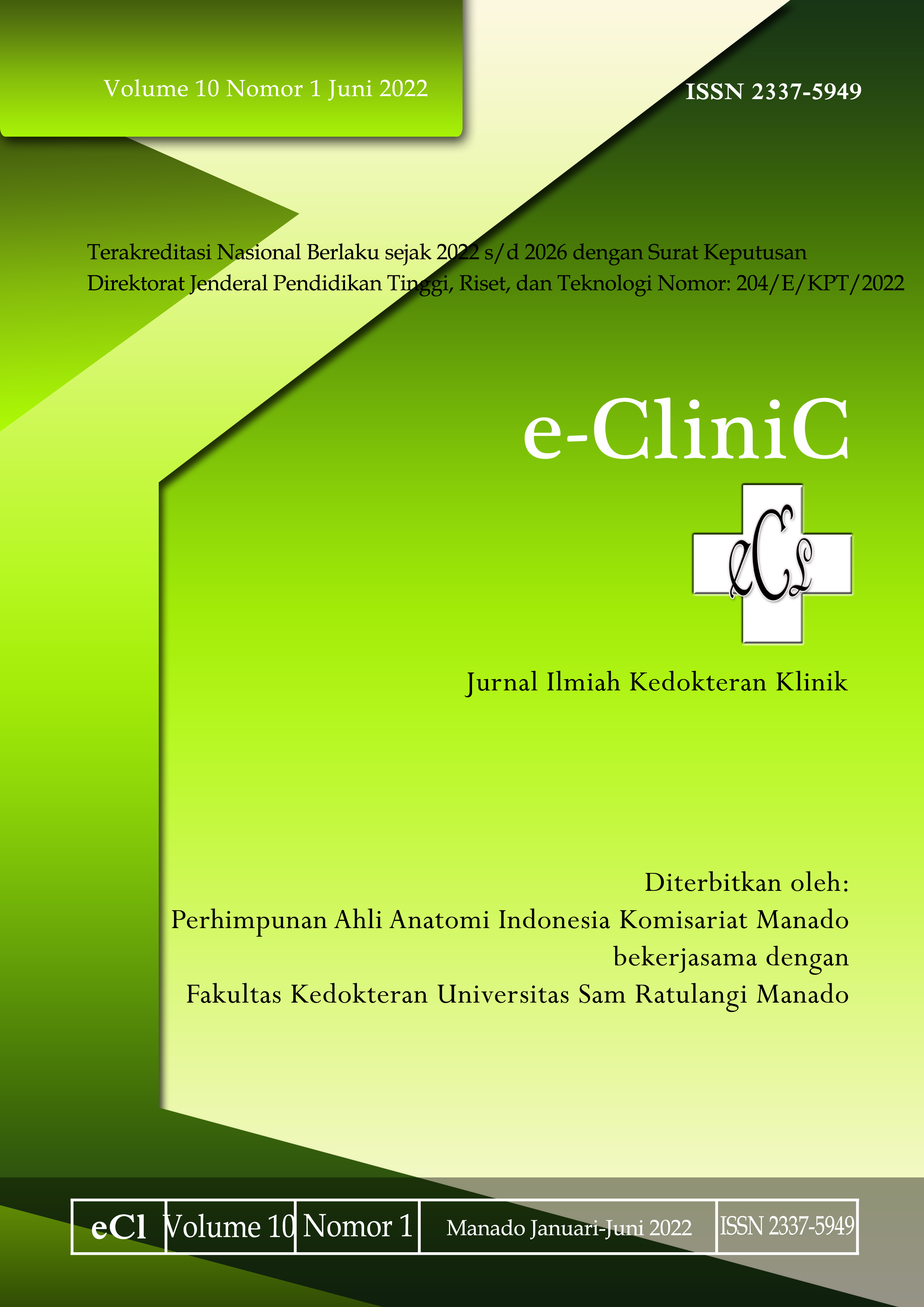Intussusception: Diagnosis and Management According to the Competence of Primary Service Doctors
DOI:
https://doi.org/10.35790/ecl.v10i1.37464Abstract
Abstract: Intussusception is defined as the invagination of a bowel segment into another. Intussusception can occur at any age but it is most common in children aged three months to two years. In children, the cause of intussusception is idio-pathic and is assumed to be associated with uncoordinated intestinal peristalsis or lymphoid hyperplasia, which may be due to gastrointestinal infection. Clinical findings include intermittent abdominal pain, vomiting, and red currant jelly stools. The diagnosis of intussusception is confirmed by using contrast enema, ultrasound, and CT-Scan. Improving condition must be done before performing a surgery. In conclusion, intussusception has a good prognosis with early diagnosis and treat-ment. Surgery is an option if the intussusception is followed with complication or if the enema reduction fails.Keywords: intussusception; invaginationAbstract: Intussusception is defined as the invagination of a bowel segment into another. Intussusception can occur at any age but it is most common in children aged three months to two years. In children, the cause of intussusception is idiopathic and is assumed to be associated with uncoordinated intestinal peristalsis or lymphoid hyperplasia, which may be due to gastrointestinal infection. Clinical findings include intermittent abdominal pain, vomiting, and red currant jelly stools. The diagnosis of intussusception is confirmed by using contrast enema, ultrasound, and CT-Scan. Improving condition must be done before performing a surgery. In conclusion, intussusception has a good prognosis with early diagnosis and treatment. Surgery is an option if the intussusception is followed with complication or if the enema reduction fails.Keywords: intussusception; invaginationDownloads
Additional Files
Published
How to Cite
Issue
Section
License
COPYRIGHT
Authors who publish with this journal agree to the following terms:
Authors hold their copyright and grant this journal the privilege of first publication, with the work simultaneously licensed under a Creative Commons Attribution License that permits others to impart the work with an acknowledgment of the work's origin and initial publication by this journal.
Authors can enter into separate or additional contractual arrangements for the non-exclusive distribution of the journal's published version of the work (for example, post it to an institutional repository or publish it in a book), with an acknowledgment of its underlying publication in this journal.
Authors are permitted and encouraged to post their work online (for example, in institutional repositories or on their website) as it can lead to productive exchanges, as well as earlier and greater citation of the published work (See The Effect of Open Access).







